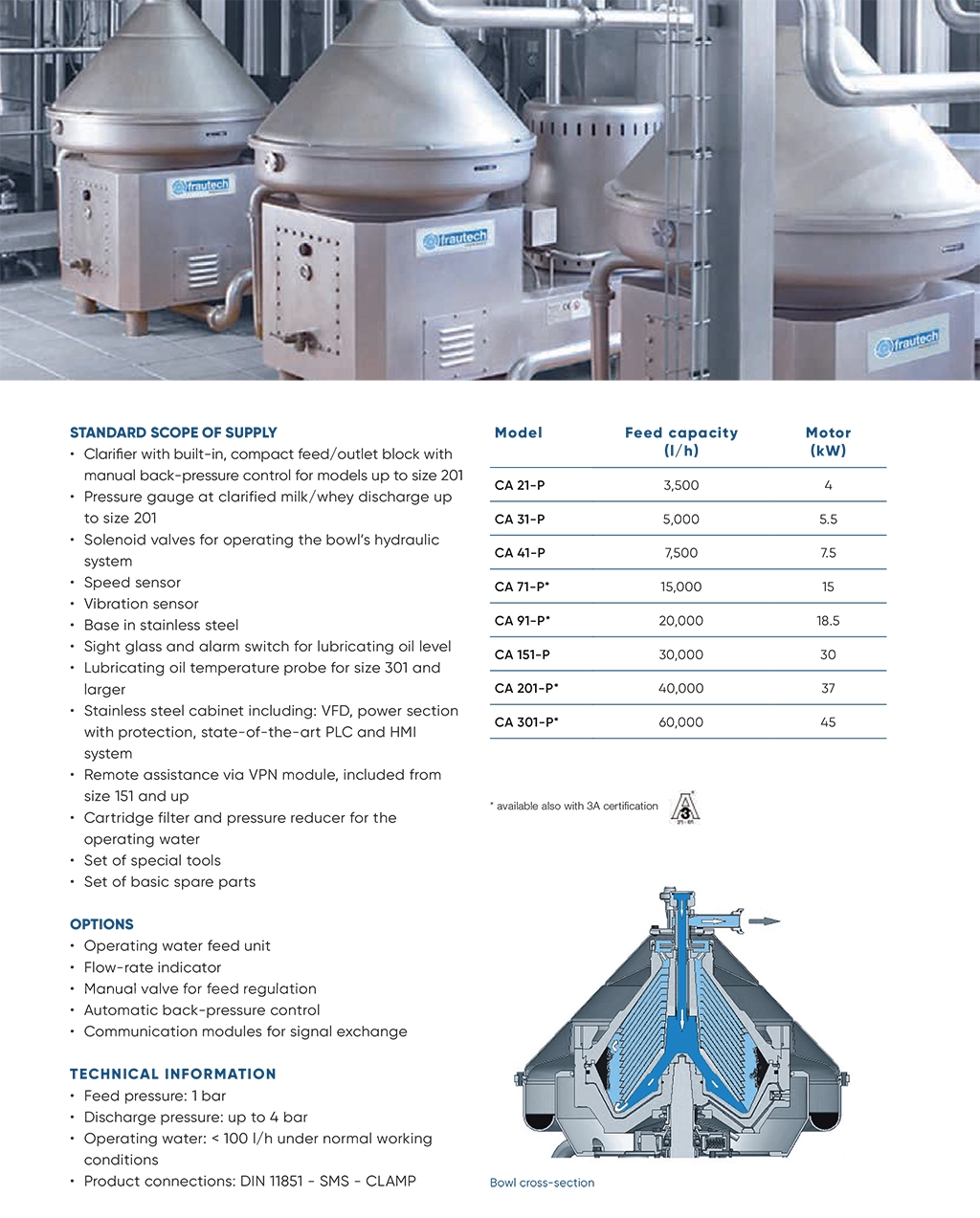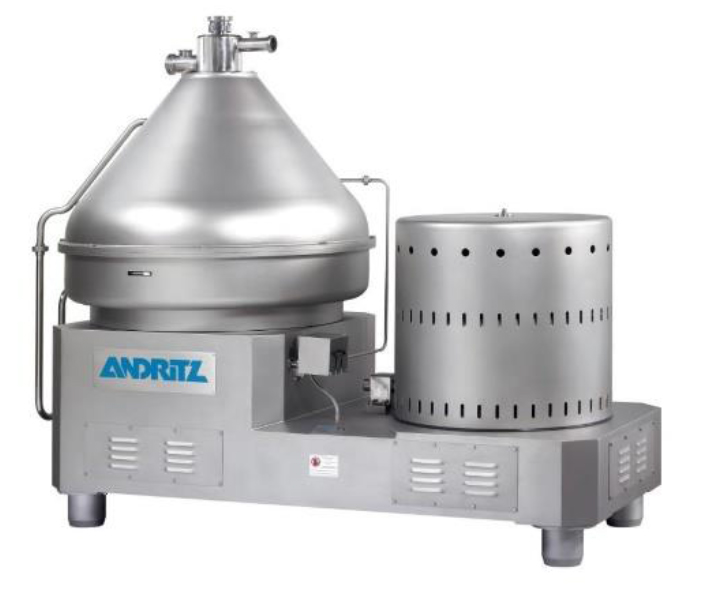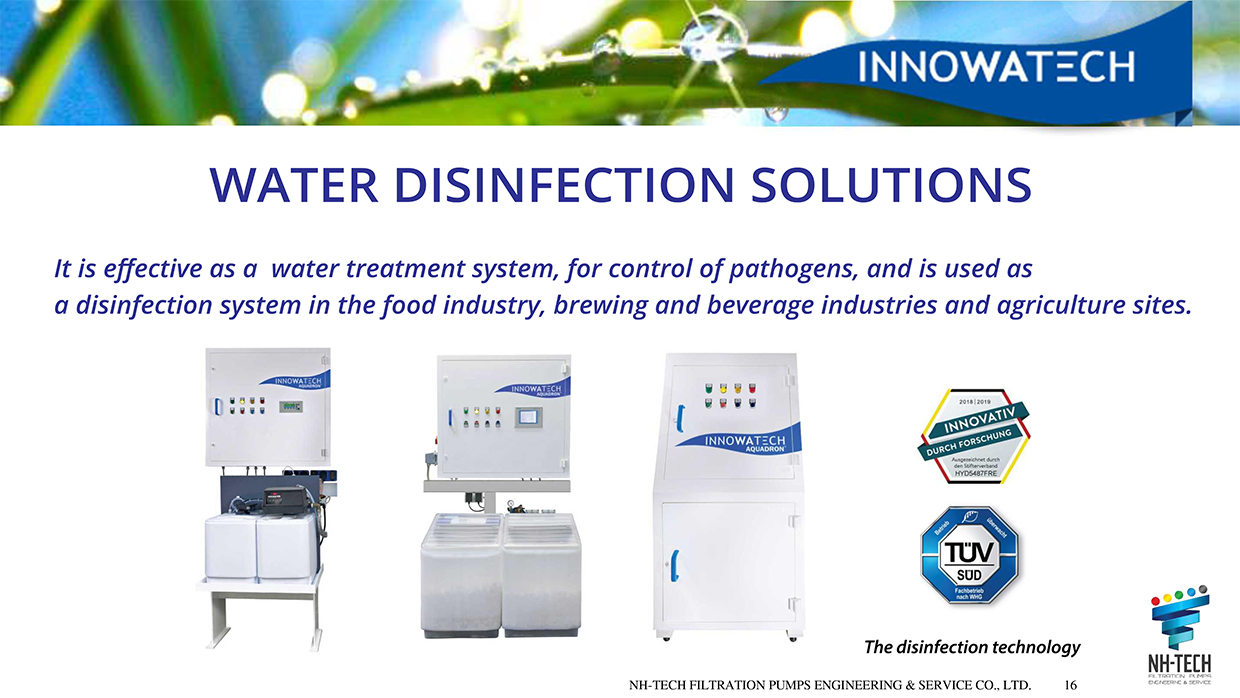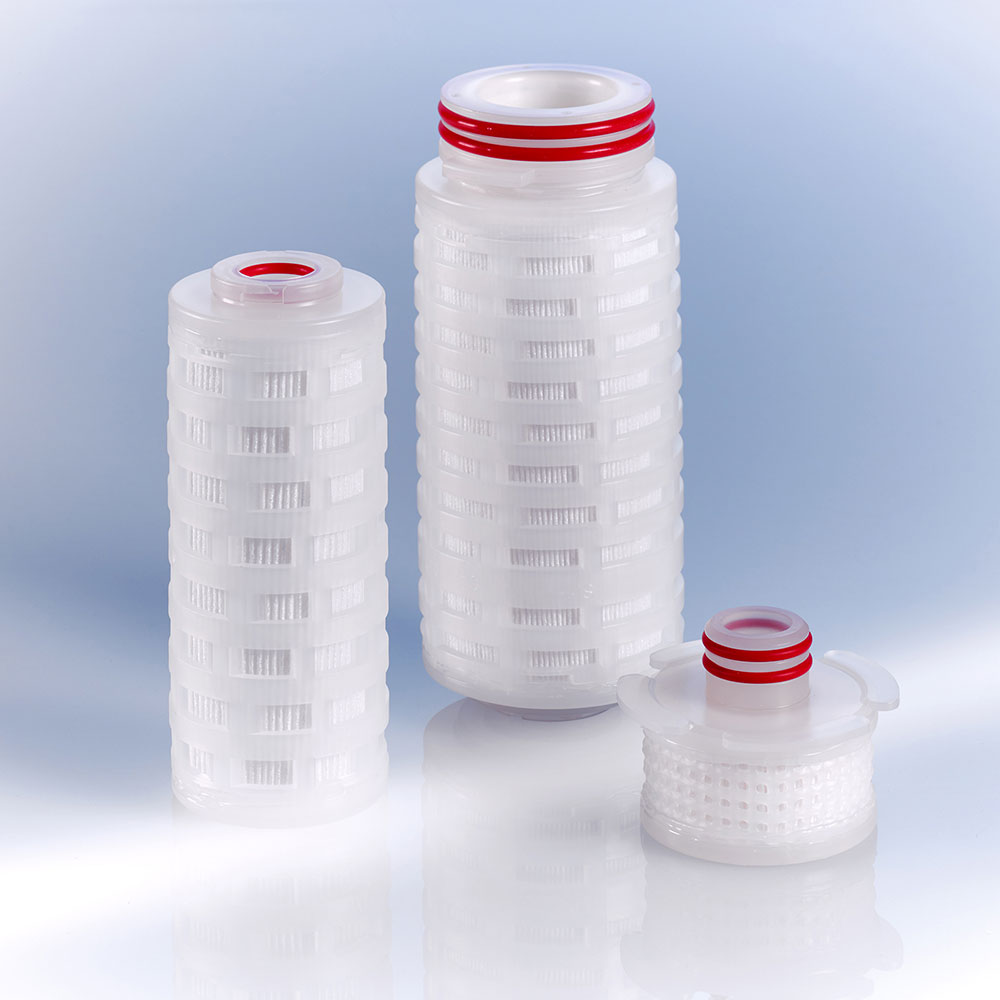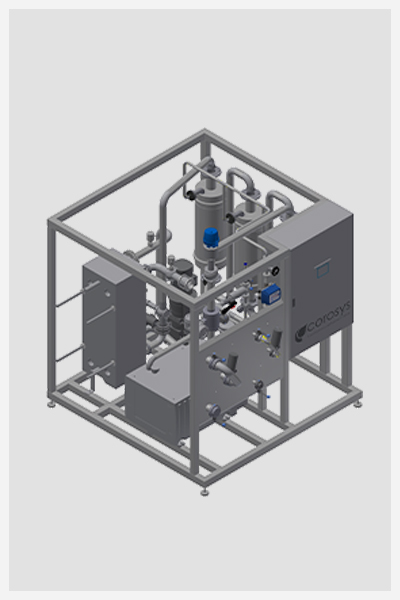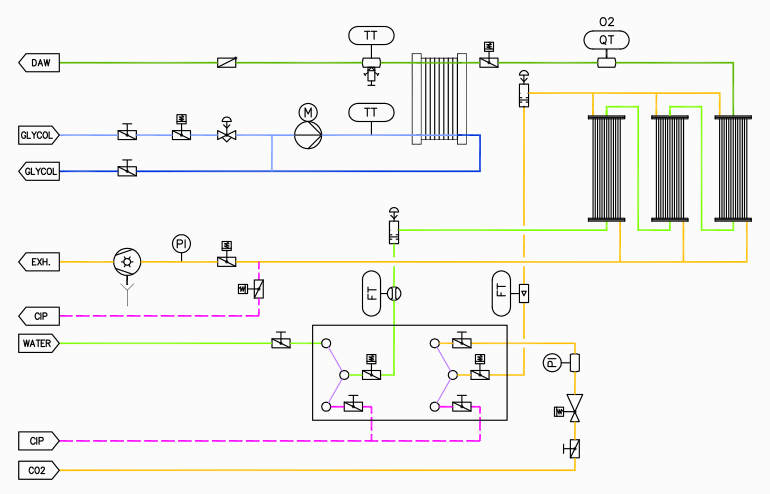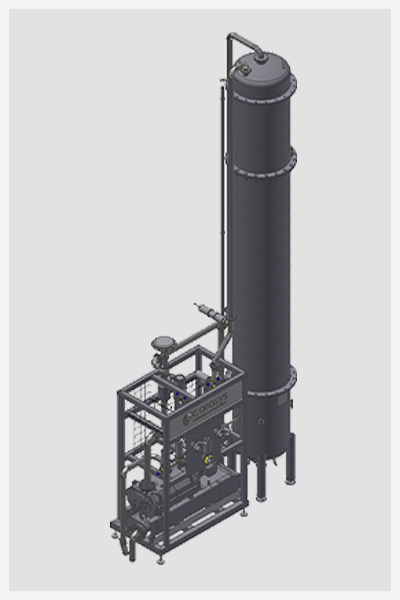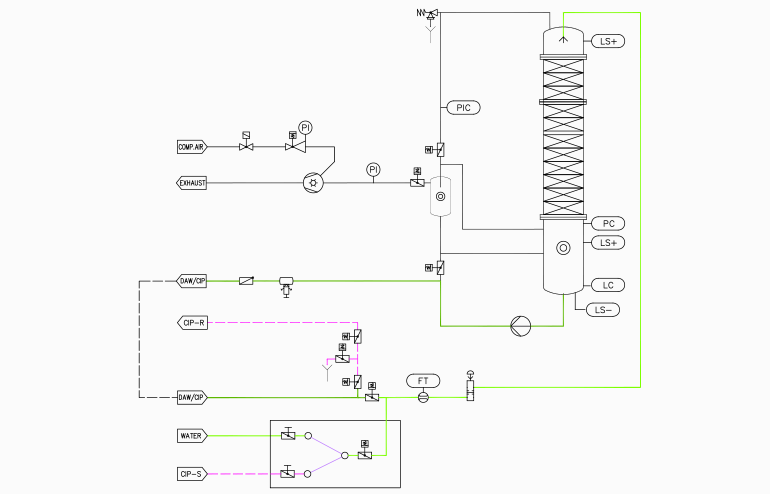Bacteria removal clarifiers
Bacteria removal from milk and whey significantly improves the quality of final products.
For instance, in production processes where the milk
temperature does not exceed 50 °C throughout the
entire process – production of raw-milk cheese for
example – a higher product quality is obtained by using
a bacteria removal separator. Undesirable effects often
caused by bacteria, such as acid fermentation and
cheese blowing, are thus avoided.
Furthermore, a reduced shelf life of soft cheese and soft
cheese-based products may also be attributed to the
presence of bacteria. As in the previous case, bacteria
removal greatly contributes to achieving a longer life of
fresh milk and a better quality of whey-derived products,
such as protein drinks.
Used with warm milk/whey – ideally at
55-62 °C – for maximum separation efficiency, they
guarantee the highest bacteria removal rate
OPERATING PRINCIPLES
• The milk/whey is fed under pressure through an enclosed pipe.
• It then fl ows smoothly into the bowl through the feed pipe and the distributor.
• The bacteria and other solids subject to the action of the centrifugal force are forced towards the periphery of the bowl and accumulate in the solids acceleration zone before being automatically discharged at
pre-set intervals.
• The clarifi ed milk/whey rises through the disc stack and up the centripetal pump that discharges it through enclosed piping.
• The concentrate rises above the upper disc to reach the centripetal pump.
• The concentrate can either be discharged or recirculated into the bowl to further concentrate the bacteria for discharge







